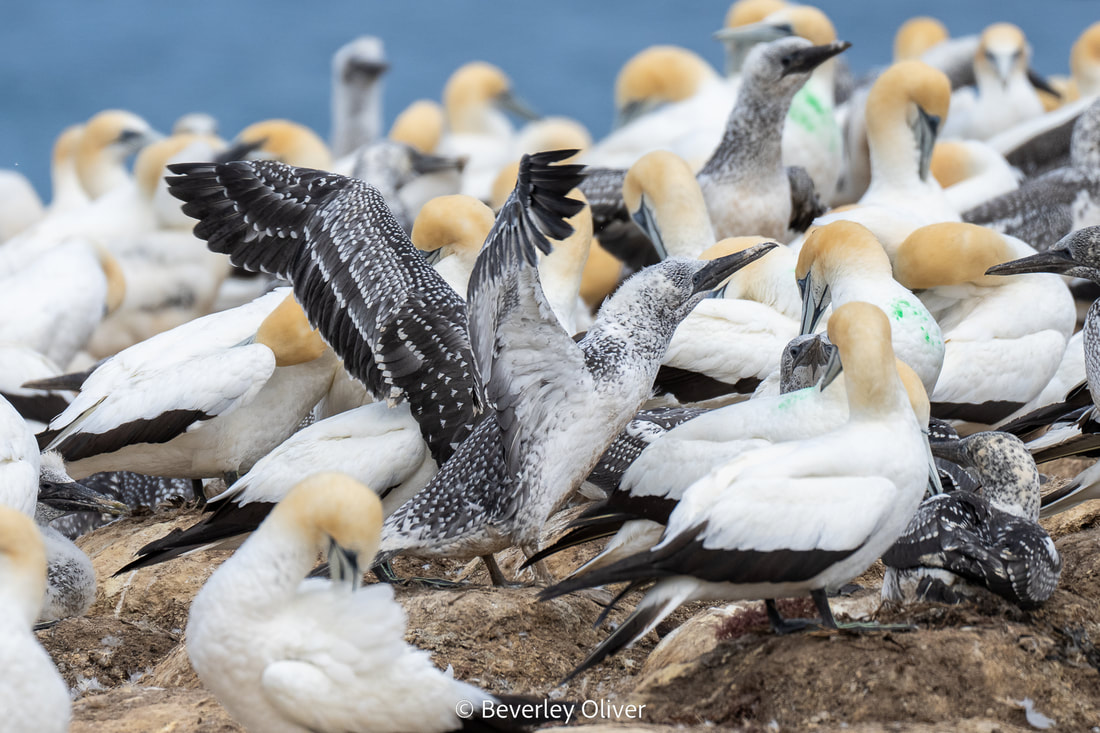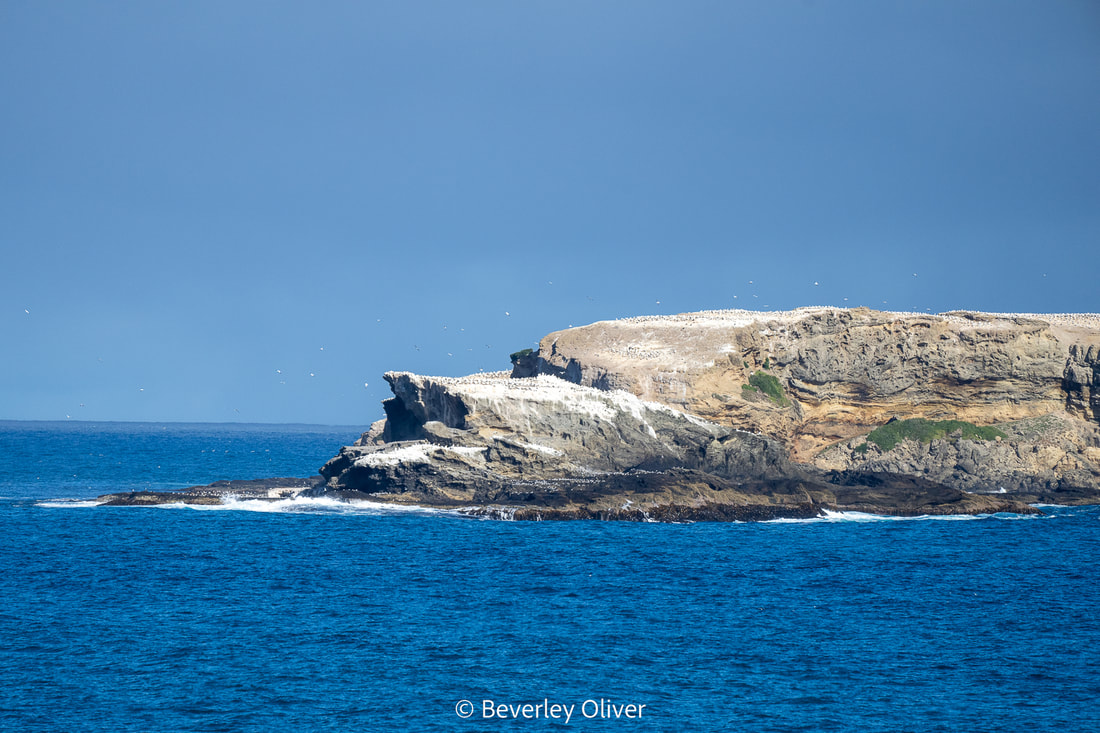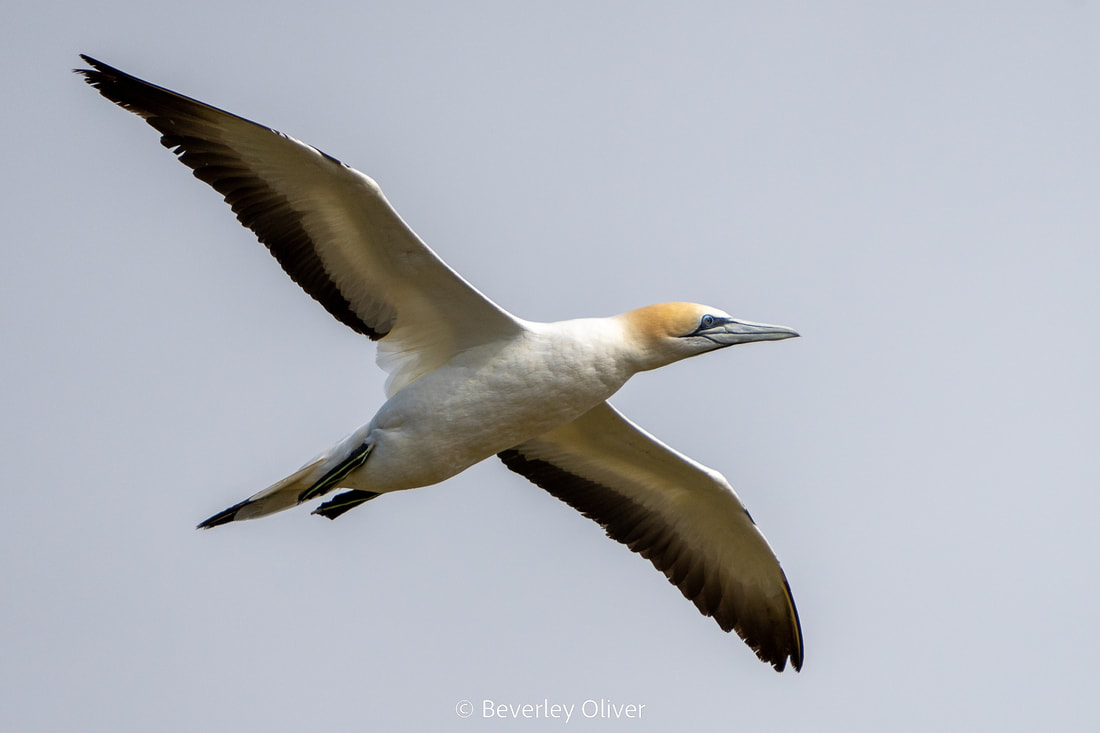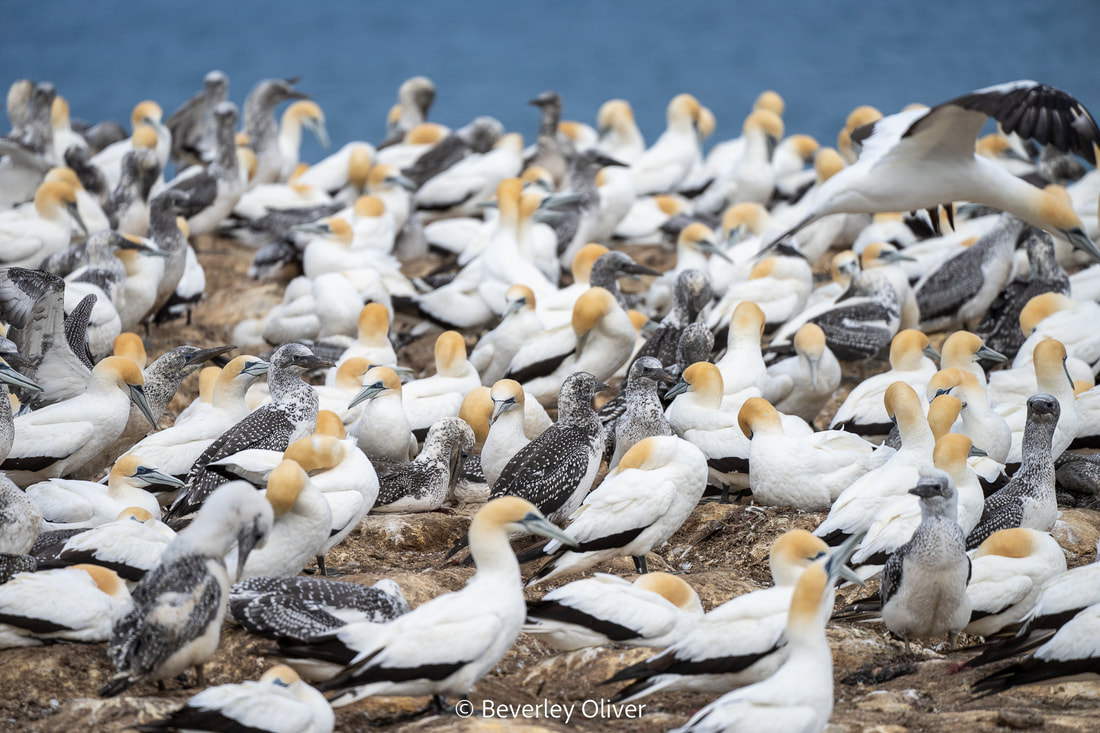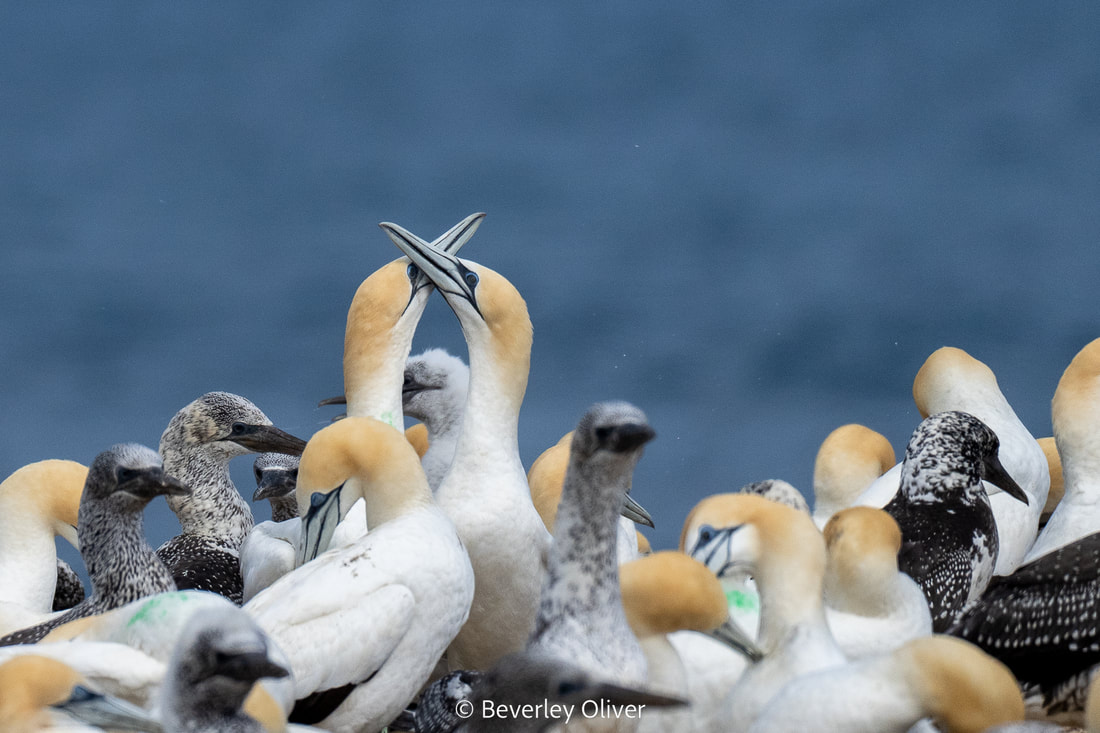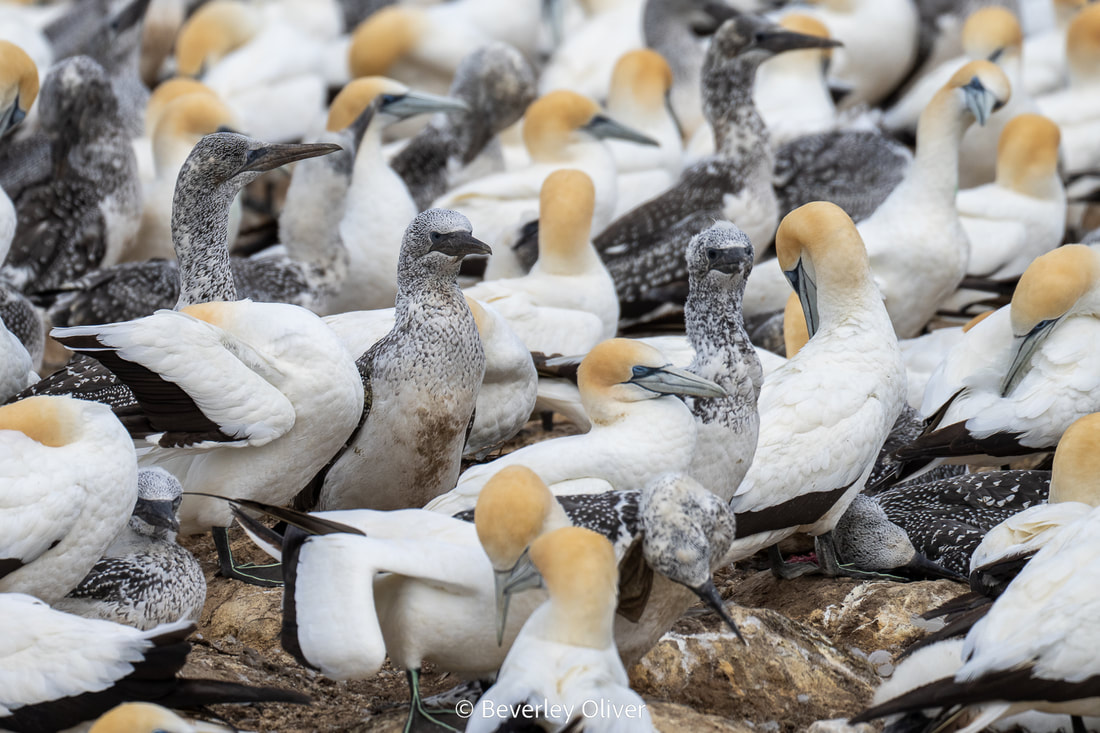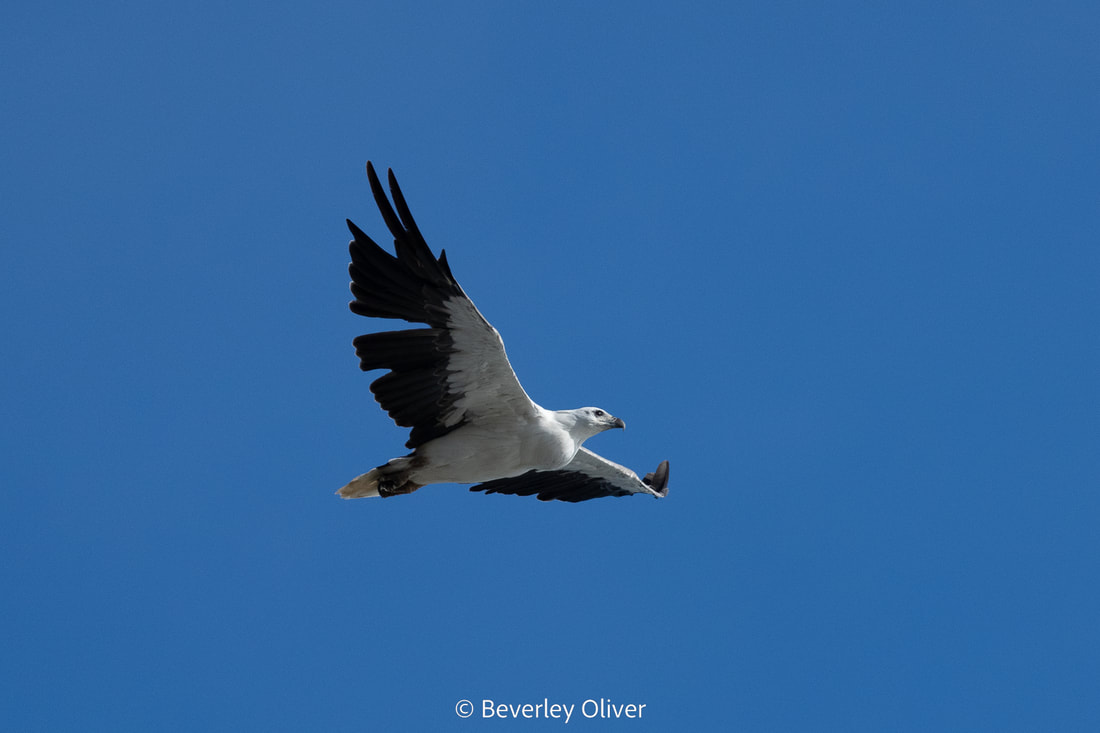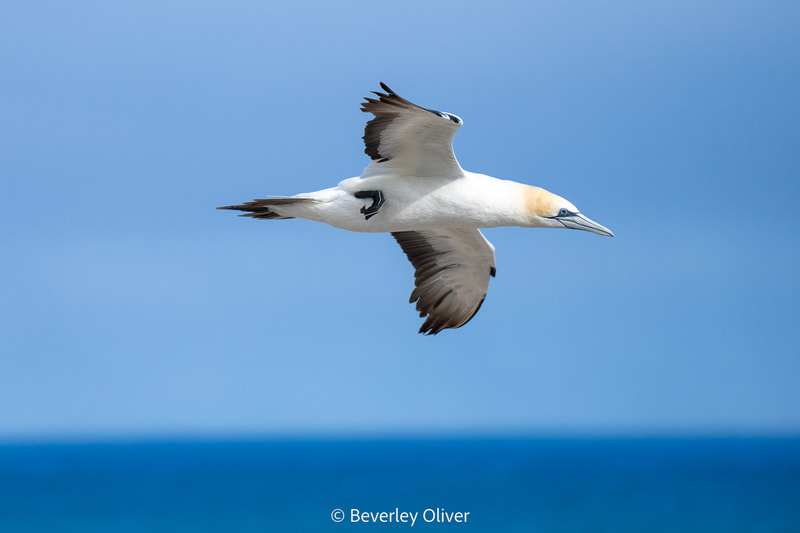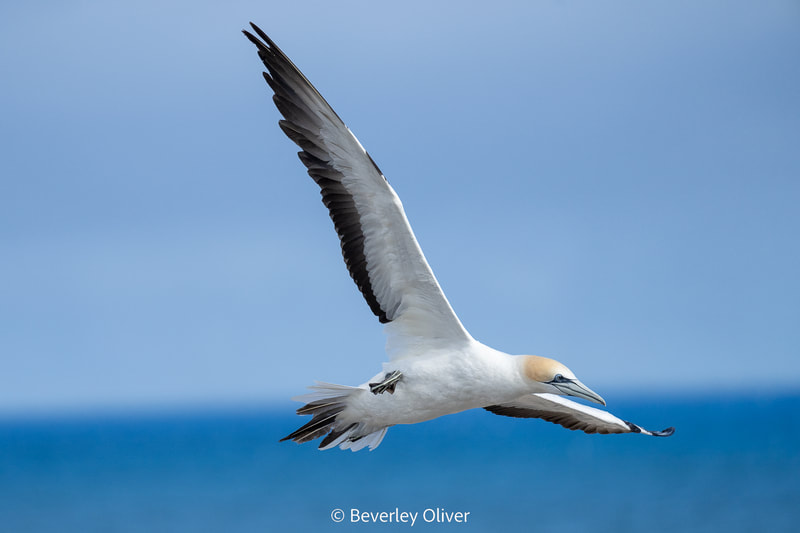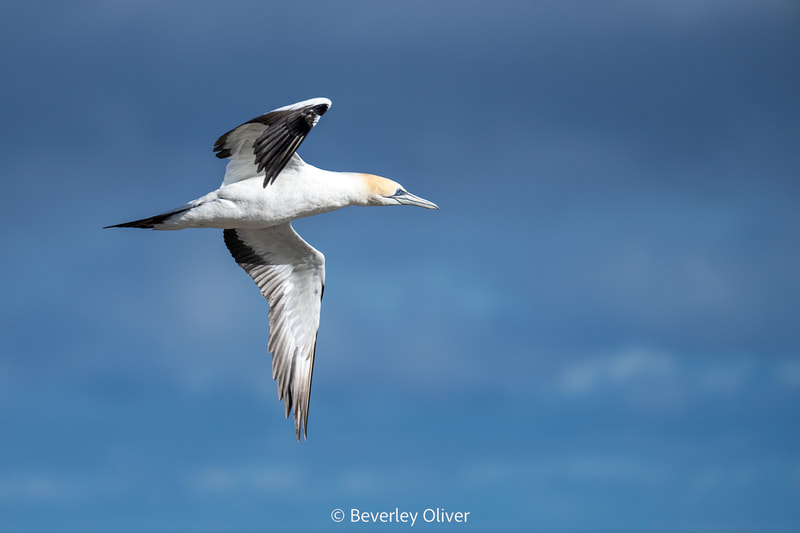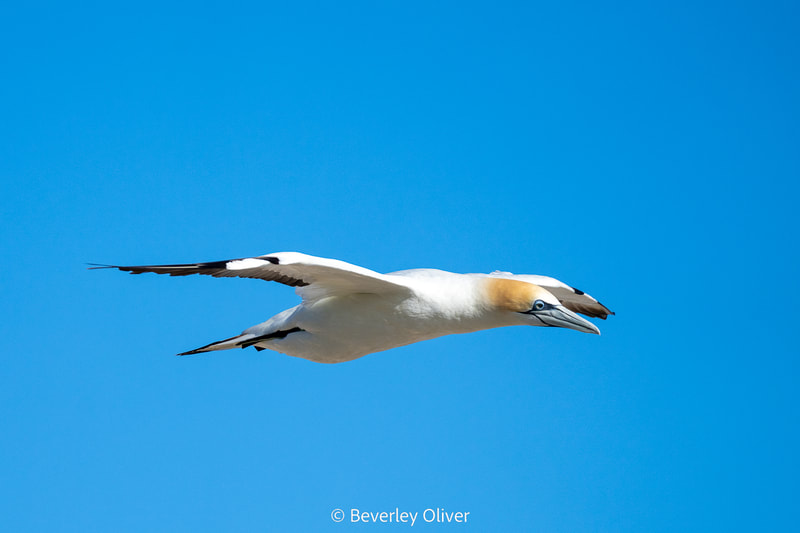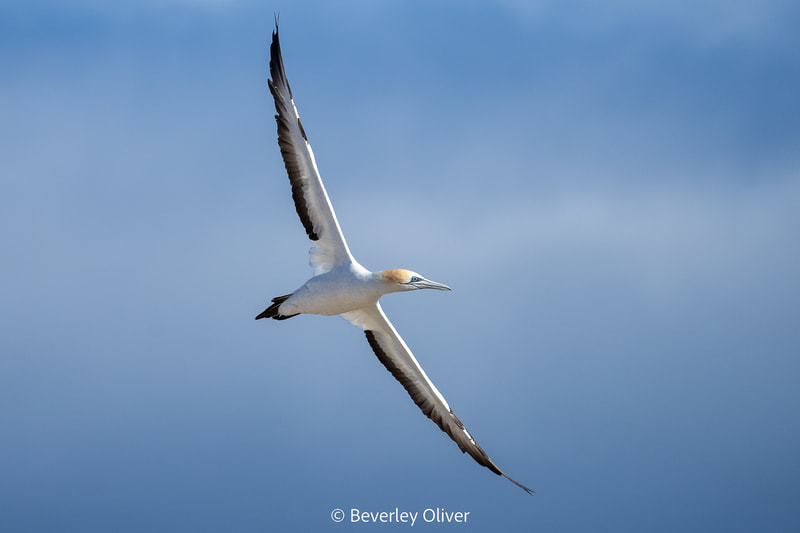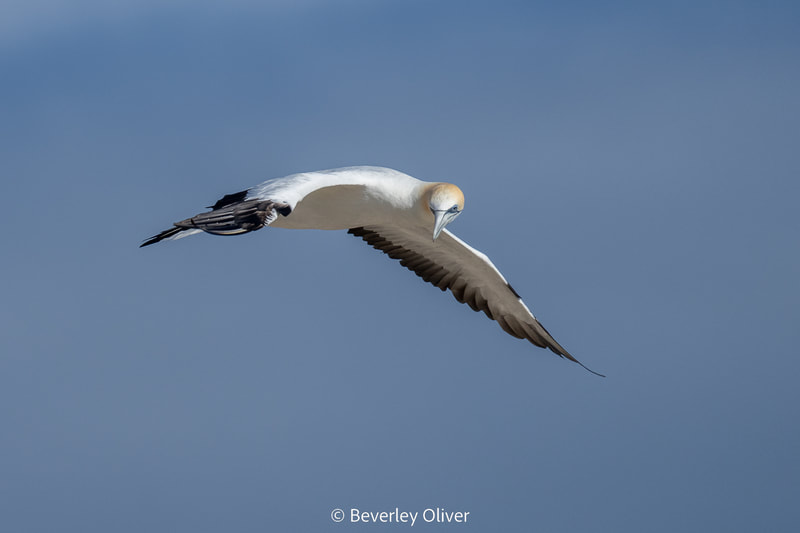|
On a recent visit to Victoria's Point Danger Gannet colony (in Feb 2023), we saw the chicks preparing to fledge. We so loved our first trip to see the Australasian gannet colony a few months back - we couldn't resist making another visit. Last time was great - this time was mayhem, in a good way: the chicks were born and grown and testing their wings. If you'd like to see the quick summary, watch this clip, watch this. And then read on for more detail.
Apparently, this is Australia's only mainland gannet colony, so it's a unique experience. All others are on islands offshore, which was the case for these birds. They used to be confined to the St Lawrence Rocks just off shore. To avoid predation and human interference, the colony is protected behind a locked wire fence. If you time it right, someone from the Portland Information Centre comes along after 5pm about three times a week to open the gates and let visitors view the colony at close range (check with the Information Centre). We were very happy to be there on one of those evenings. Even if you're not, there are plenty of gannets in the air and swirling around, flying out over the ocean and returning, often with kelp offerings for there loved mates and chicks. This visit was really about the chicks - they were dotted throughout the colony, and the hub-but was pretty deafening. Apparently, gannets mate for life and have one chick a season. Both male and female gannets have home duties while the other brings food. How they can find each other in the melee is amazing. Often the returning gannet hovers overhead, wings at full pace, and lowers itself to rejoin its mate, and presumably its chick. This landing procedure can provide some great photographic opportunities for the viewers. Once the gannet lands, there is often a lengthy courtship display which is quite beautiful: the gannets rub each others' necks for quite some time (see the clip above for an example). The chicks seem pretty uninterested in this display - they are more focused on getting a feed, or testing their wings, ready to fledge. Once they do find their wings and go, the chicks remain at sea for five years before coming back to breed for the first time. There was one more surprise during this visit: at some point during the viewing hour, a cry went up and all photographers were urged to point elsewhere... we had a flyby from a white-bellied sea-eagle. A lifer for us, and such a thrill to see. If you have any further information, please leave us a comment, because we're always keen to learn more. Enjoy these shots of the mature gannets in flight around the colony.
Comments
|
SUBSCRIBETo get blog updates, signup when the form appears on screen, or contact us. We'll contact you about once a month with an update. To find a blog about a bird or a place, use this search bar, or check out our Google map.
Archives
September 2023
|
